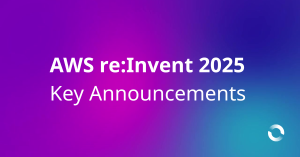How learning to “talk” to AI properly changed everything about my cloud consulting work
TL;DR: Effective prompt engineering for AWS can save you time, money, and headaches in cloud consulting. By giving AI context, constraints, and clear roles, you’ll get solutions that work the first time.
Table of Contents
Look, I’ll be honest with you. When I first started using AI tools in my cloud consulting work, I was terrible at it. Like, embarrassingly bad.
I’d throw vague questions at ChatGPT or Amazon Q and get back these generic, textbook-style answers that were about as useful as a chocolate teapot. “Help me design a serverless architecture,” I’d type, then wonder why the response looked like it came straight from AWS documentation.
It took me way too long to realize the problem wasn’t the AI—it was me. I was talking to these incredibly sophisticated tools like they were Google search bars instead of having actual conversations with them.
That’s when I discovered prompt engineering, and honestly? It changed everything.
What Actually Is Prompt Engineering for AWS Cloud Consulting?
Before you roll your eyes and think “great, another buzzword,” hear me out. Prompt engineering is just learning how to communicate effectively with AI. That’s it.
Think about it like this: you wouldn’t walk up to a new colleague and say “do work stuff.” You’d give them context, explain what you need, maybe mention your deadline. Same deal with AI, except these “colleagues” are incredibly literal and need even more specificity than your most pedantic coworker.
The weird thing is, once you get the hang of it, talking to AI starts feeling more natural than a lot of human conversations. No office politics, no need to read between the lines—just clear communication that gets you exactly what you need.
Why This Matters If You Work in the Cloud
Here’s the thing about working with AWS and cloud technologies: there’s always fifty different ways to solve any problem. The challenge isn’t finding a solution—it’s finding the right solution for your specific situation, budget, timeline, and constraints.
When I’m working with clients at Cevo, the difference between a good AI conversation and a great one can literally save weeks of work. Instead of getting generic “use Lambda and API Gateway” advice, I can get tailored recommendations that account for their compliance requirements, existing infrastructure, and that tight budget their CFO is breathing down their neck about.

The Cost of Bad AI Prompts in AWS Projects
I learned this lesson the expensive way. Early in my AI journey, I was working on a project for a fintech client. I asked for help designing their architecture with a prompt that was basically “need secure serverless setup for financial data.”
The AI gave me a perfectly fine, textbook serverless architecture. Problem was, it completely ignored their GDPR requirements, didn’t account for their existing PostgreSQL database, and would have cost them about three times their budget.
I spent two days reworking everything. Two days I could have saved with a better prompt that included their actual requirements.
Now? I front-load all that context, and I get solutions I can actually use on the first try.
Using Prompt Engineering with AWS Tools
Since we work with AWS services daily, I’ve found that prompt engineering is especially powerful with services like:
- Amazon Bedrock – Where better prompts literally save you money on API calls
- Amazon Q – AWS’s AI assistant that gets way smarter when you give it proper context
- Lambda functions – Where optimised prompts can help you write more efficient code
Here’s a real example from last month. Instead of asking “help me optimise this Lambda function,” I now write something like:
You're a senior AWS developer who's obsessed with cost optimisation.
I've got a Lambda function that processes image uploads for a social media app.
It's running Python 3.9, currently allocated 512MB memory, and averaging
2 second execution times. We're processing about 10,000 images daily,
and our AWS bill is getting out of hand.
The function resizes images and uploads them to S3. I suspect we're
over provisioned on memory but I'm not sure. Can you help me optimise
this for cost without sacrificing performance?
Show me specific configuration changes and explain your reasoning.
See the difference? The AI now knows exactly what I’m dealing with and can give me actionable advice instead of generic optimisation tips.

5 Prompt Engineering Principals for Success
After months of trial and error (and some spectacular failures), I’ve boiled down effective AI communication to five core principles:
1. Stop Being Vague
This was my biggest problem. I used to ask things like “help me with AWS security” and wonder why I got back a 2,000-word essay covering everything from IAM to VPC security groups.
Avoid broad prompts and be specific:
Example: “I need to secure API Gateway endpoints for a healthcare app that handles PHI. We’re using Cognito for auth but I’m worried about rate limiting and DDoS protection. What’s the most cost-effective way to add WAF protection?”
The more specific you are, the more useful the response.
Tip: Some LLMs handle vague prompts better than others. Choose your LLM’s wisely.
2. Set the Scene
AI needs context like humans need coffee—it just works better with it. Always include:
- What you’re working on
- Any constraints (budget, compliance, deadlines)
- What you’ve already tried
- What success looks like
3. Give the AI a Role
This sounds weird, but it works incredibly well. Instead of talking to a generic AI, I talk to “a senior DevOps engineer who’s worked at startups” or “an AWS solutions architect who specialises in cost optimisation.”
The AI actually responds differently based on the role you give it. A “startup DevOps engineer” will suggest scrappy, cost-effective solutions. An “enterprise architect” will focus on scalability and compliance.
4. Ask for What You Actually Want
If you want a step-by-step guide, ask for steps. If you want code examples, ask for code. If you want a comparison table, ask for a table.
I used to assume the AI would just know what format I wanted. Spoiler alert: it doesn’t.
5. Have a Conversation
Here’s the thing nobody tells you: you don’t have to get it perfect on the first try. AI conversations work best when they’re actually conversations, so treat the interaction as an ongoing discussion.
- Start with a good prompt
- Follow up with questions
- Ask for clarification
- Request examples.
The AI remembers the context of your conversation, so each exchange gets better.

Using AI to Improve Your Prompt Engineering Skills
Want to know a secret? I use AI to help me write better prompts for AI. It’s like prompt engineering inception, and it’s ridiculously effective.
Here’s how it works. Let’s say I wrote this terrible prompt:
“Help me with my website performance.”
I can ask another AI (or the same one in a new conversation):
I'm trying to get better at prompt engineering. Can you help me improve this prompt?
My original: "Help me with my website performance."
What I actually want: Specific advice to speed up my WordPress e-commerce site that's loading slowly and losing customers.
My situation: Small business owner, basic tech skills, limited budget, shared hosting.
Can you rewrite my prompt to get better results?
The AI will give me a much better prompt that includes context, specifics, and clear expectations. It’s like having a prompt engineering coach available 24/7.
The Bottom Line
Prompt engineering isn’t about learning some complex new skill—it’s about communicating clearly and having better conversations. The same skills that make you good at explaining technical concepts to clients will make you good at working with AI.
The difference is, AI never gets tired, never has a bad day, and never judges you for asking the same question three different ways until you get the answer you need.
And in our world of cloud consulting, where every project has unique constraints and requirements, having an AI conversation partner that can adapt to your specific needs? That’s not just helpful—it’s transformative.
Want to apply prompt engineering to your AWS projects? Explore our Data & AI solutions and see how Cevo helps teams leverage AI tools like Amazon Q and Bedrock for faster, smarter cloud consulting.
Resources That Actually Help
AWS Stuff
- Amazon Bedrock prompt engineering guide – The official AWS take on this
- Amazon Q Developer docs – If you’re not using Q yet, you should be
- AWS AI/ML Blog – Where AWS publishes the good stuff
Cevo Resources
- Our cloud modernization work – What we actually do
- Data & AI solutions – How we help with AI implementations
- Our blog – More insights from the team

Ian is a passionate and enthusiastic Technology professional with vast experience in the development and management of Infrastructure hosting on-prem and cloud.




